The 1970s feel like yesterday to many of us who lived through them, but to today’s kids, they might as well be ancient history. Family life in that polyester-clad decade operated under completely different rules and expectations. From dinner time rituals to vacation traditions, the typical American family engaged in practices that would leave modern children staring in disbelief. Take a nostalgic journey with us as we explore twelve family traditions from the ’70s that would utterly baffle the smartphone generation.
1. Gathering Around the TV as a Family Event
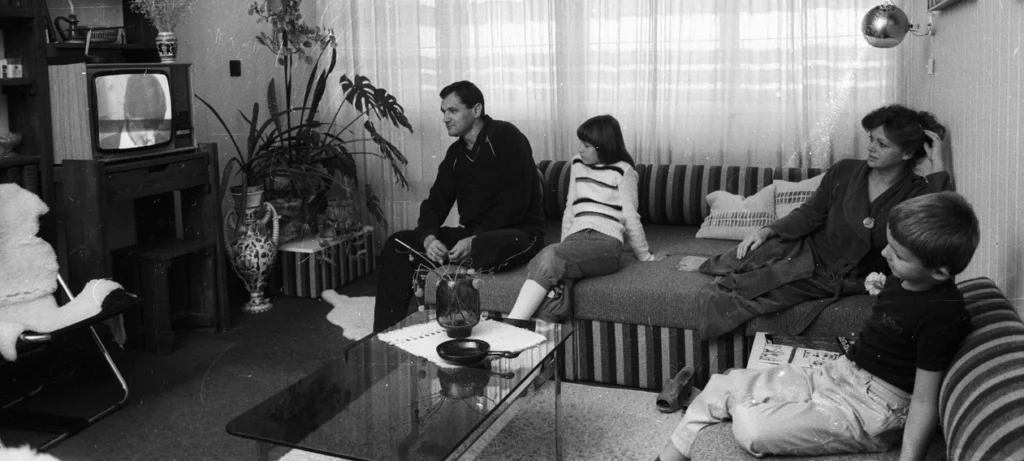
In the 1970s, watching television was a scheduled family activity, not the on-demand solo binge-watching of today. Families would literally plan their entire evenings around TV Guide listings, with everyone knowing that Monday at 8 PM meant “MAS*H” and missing it meant waiting months for a rerun. The youngest family member often served as the human remote control, stationed near the TV to change channels on command or adjust the antenna when reception wavered. No one could forget, as well, as Davidson reminisces, the dawn of color TV as well.
The limited options—just three major networks plus PBS and maybe an independent local station—meant everyone watched the same shows together, regardless of age appropriateness. Children absorbed adult dramas like “Kojak” or “Columbo” while parents endured “The Brady Bunch,” creating a shared cultural experience across generations. The thought of each family member retreating to separate rooms to watch different programs on personal devices would have seemed as foreign as having a telephone in your pocket.
2. Sunday Drives With No Destination
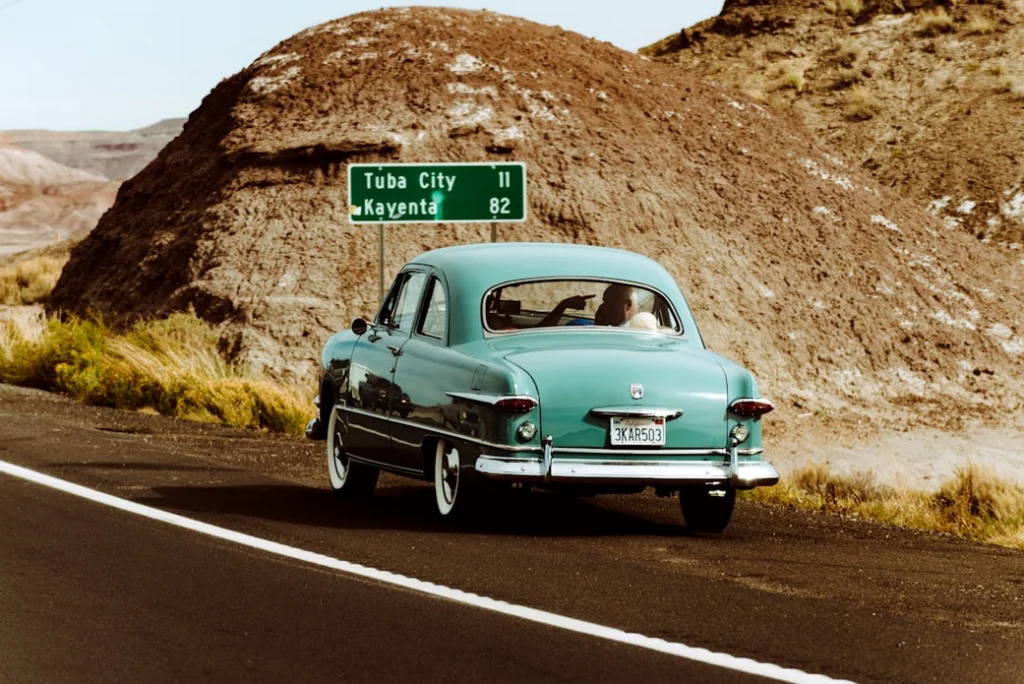
Before gas prices skyrocketed and entertainment options multiplied, families would pile into the station wagon after Sunday lunch for a drive with absolutely no destination in mind. These aimless journeys might last hours, with Dad at the wheel taking random turns down country roads or through interesting neighborhoods while everyone commented on houses, scenery, or roadside attractions. No GPS, no planned stops, no estimated arrival time—just driving for the simple pleasure of seeing what you might discover. Return on Integrity also celebrates the liberating feeling that a Sunday drive, effectively unplugged, grants.
Children today would be mystified by the concept of using precious free time to sit in a car without even the promise of reaching somewhere exciting. The complete absence of screens, audiobooks, or entertainment beyond playing “I Spy” or singing along to the radio would seem like a form of punishment rather than family bonding. The fact that these drives often featured no air conditioning, with windows down and hair blowing, while station wagon exhaust occasionally wafted into the back seat, would make the experience even more incomprehensible to modern kids.
3. The Formal Living Room No One Was Allowed to Use

Many 1970s homes featured a living room that existed purely for show—a pristine museum of furniture covered in plastic slipcovers that no family member actually sat on. This room, often containing the “good” furniture, fancy lamps, and delicate knickknacks, was reserved exclusively for “company” that rarely materialized. Children were forbidden from entering except on special occasions, creating an odd situation where families paid for and maintained space in their own homes that they weren’t permitted to enjoy. BBC puts into perspective just how much the living room continues to evolve even today.
Kids today, raised in open-concept homes designed for actual living, would be baffled by the concept of cordoning off prime square footage. The idea that you’d vacuum a room weekly that no one used, dust figurines no one was allowed to touch, and maintain furniture no one sat on would seem like a bizarre waste of resources. Even more confusing would be the family’s actual gathering spot—often a wood-paneled “den” or “family room” with less comfortable furniture but where people were actually allowed to relax.
4. Calling Relatives Long-Distance Only on Special Occasions

In the 1970s, long-distance phone calls were luxury items saved for birthdays, holidays, or genuine emergencies. Families would gather around the single household phone, each person taking turns speaking briefly while others listened in or hovered nearby, conscious of the mounting per-minute charges. Conversations were focused and efficient, with none of the rambling video chats kids enjoy today.
The ritual often included parents standing nearby making “wrap it up” gestures as the precious minutes ticked by, followed by days of commenting on how expensive the call had been. Modern children, accustomed to free video calls with relatives any time they wish, would be stunned by the idea that hearing Grandma’s voice required financial planning. The concept that distance actually separated families in meaningful ways—no daily texts, no social media updates, no casual checking in—would feel like a description of pioneer life rather than the relatively recent past.
5. Encyclopedia Night for School Projects

When a school assignment required research in the ’70s, families would have “encyclopedia night,” gathering around the dining table with the relevant volume of the family’s prized encyclopedia set. Children would hand-copy facts (or if lucky, photocopy at great expense), while parents reminisced about their own encyclopedia experiences or helped pronounce difficult words. The entire family might get involved in finding relevant information across multiple volumes, transforming homework into a collective treasure hunt.
Today’s kids, able to access the world’s knowledge on devices in their pockets, would be mystified by the limited information available in those bound volumes—information that was already outdated the moment it was printed. The concept of being completely at the mercy of whether your family had purchased the most recent edition, or the supplemental yearbooks that updated crucial information, would seem unnecessarily restrictive. Even more foreign would be the idea that an entire family’s questions about the world might be answerable only by those 26 alphabetically organized books on the shelf.
6. TV Dinners as a Special Treat
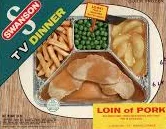
In many 1970s households, the convenience food of TV dinners—those compartmentalized aluminum trays of mystery meat, mashed potatoes, and brownie—was considered a special occasion rather than a last resort. Families would designate specific nights as “TV dinner nights,” often coinciding with special television events like “The Wonderful World of Disney” on Sunday evenings. Children would eagerly anticipate the novelty of eating these compartmentalized meals, often while watching television from TV trays—another ’70s staple.
Modern children, raised with concerns about processed foods and expectations of fresh, often organic meals, would be bewildered by the excitement generated by these sodium-laden frozen entrees. The very idea that parents would serve these meals as a reward rather than an apology would seem backward. Even more confusing would be the careful way ’70s parents would heat these meals in the oven for nearly an hour (microwaves being rare luxuries), making them actually less convenient than many “from scratch” options.
7. Making Popcorn From Scratch as a Family Activity

Before microwave popcorn existed, making this simple snack was a multi-person production involving specialty equipment and careful timing. Families used stovetop poppers or electric appliances with spinning metal rods that required oil, careful measurement of kernels, and constant attention to prevent burning. The production of a simple bowl of popcorn might involve one person operating the popper, another measuring ingredients, and often a third standing by with the bowl and seasonings.
Children today, able to produce perfect popcorn in minutes from a self-contained microwave bag, would struggle to understand why making this snack required coordination worthy of a surgical team. The ritual often included debate over how much oil to use, when to stop the popping process, and the proper ratio of salt and butter—discussions that could reach the intensity of diplomatic negotiations. The inevitable cleanup of errant kernels that had escaped during the process would make the entire affair seem needlessly complex to modern kids accustomed to simply tossing a single bag into the recycling bin.
8. The Annual School Clothes Shopping Trip

Back-to-school preparation in the ’70s often involved a single, momentous shopping trip where the entire family would spend a full day at the mall or department store buying the year’s school wardrobe all at once. This annual expedition was treated with the strategic importance of a military campaign, often beginning with breakfast out and ending with dinner at a restaurant—both rare treats in themselves. Children would try on countless outfits under the critical eyes of parents who were making significant financial investments in clothes expected to last the entire school year.
Today’s kids, accustomed to more frequent purchasing and online shopping, would be shocked by the pressure and finality of these annual trips. The concept that these few selected outfits would represent your entire school wardrobe, with maybe one or two additions at Christmas, seems impossibly restrictive. Even more foreign would be the emphasis on durability over fashion, the expectation that clothes would be handed down to younger siblings, and the careful selection of mix-and-match pieces that could create the illusion of a more extensive wardrobe.
9. Answering the Phone Without Knowing Who Was Calling
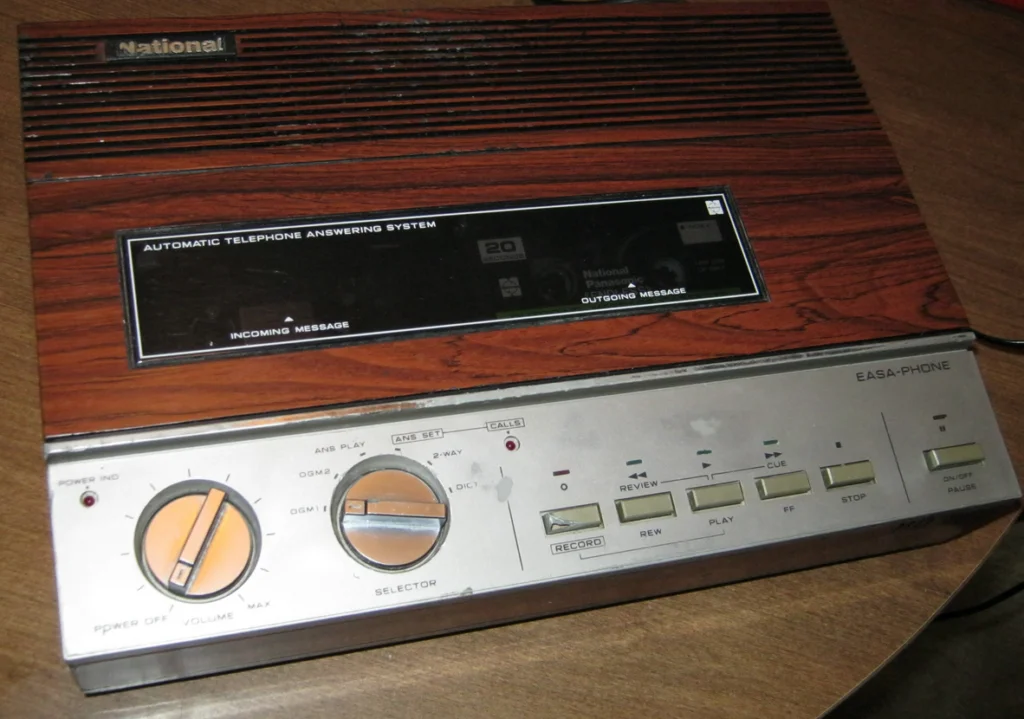
In the pre-caller ID era, every phone ring initiated a miniature family drama, as someone would have to answer without any information about who was on the other end. The uncertainty meant that answering the phone required a certain formality and preparedness that’s completely foreign to today’s screened-call world. Children were trained in proper phone etiquette and often tasked with taking detailed messages on special pads kept near the phone.
Modern kids would be horrified by the vulnerability of not knowing whether the caller was a telemarketer, an angry teacher, or their secret crush before picking up. Even more alarming would be the common practice of answering other people’s calls—taking messages for siblings or parents created an entire social etiquette around phone conversations that’s now virtually extinct. The shared family phone meant that private conversations were rare luxuries, often conducted in whispers with the phone cord stretched to its limit to reach a closet or bathroom.
10. Dad’s Slide Show Evenings
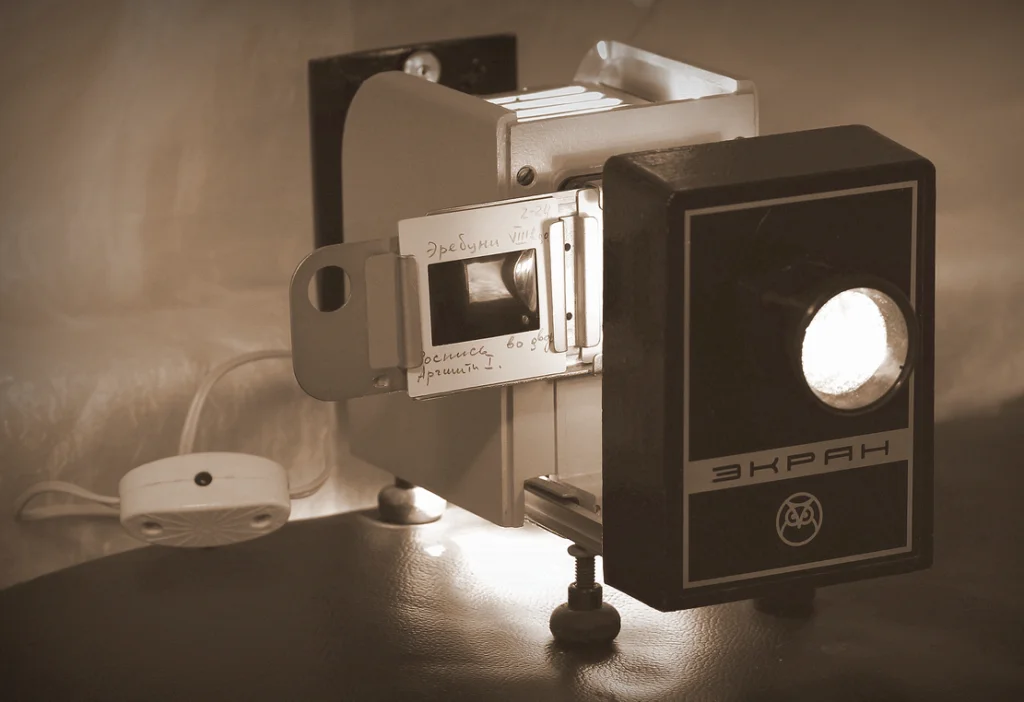
When families returned from vacations in the ’70s, they often subjected themselves (and unfortunate neighbors or relatives) to the ritual of “the slide show.” Father would set up the projector and screen in the living room, darken the lights, and subject viewers to dozens—sometimes hundreds—of slides documenting every aspect of the family trip. Each click of the carousel advancing was accompanied by narration, corrections from other family members, and the distinctive hot-metal smell of the projector bulb.
Today’s children, who can instantly share and view digital photos on multiple platforms, would be mystified by the delayed gratification of waiting days or weeks for film to be developed, only to experience it as a formal presentation event. The technical difficulties that inevitably arose—upside-down slides, jammed carousels, bulbs burning out mid-show—would seem like unnecessary complications. Most bewildering would be the social expectation that guests would sit through hours of someone else’s vacation documentation with apparent interest and enthusiasm.
11. The Wood-Paneled Station Wagon Road Trip
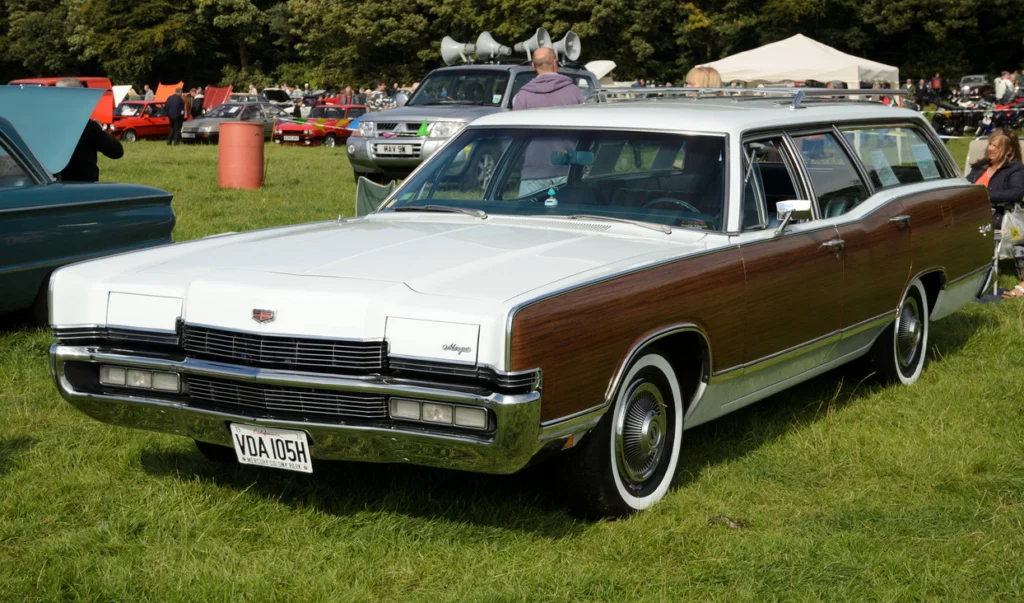
Family vacations in the ’70s often meant extended road trips in station wagons with fake wood paneling on the sides, where children occupied the rear-facing “way back” seat without seatbelts. These automotive journeys featured paper maps (often impossible to refold correctly), coolers of sandwiches to avoid expensive restaurant stops, and hours of driving before checking into roadside motels that you couldn’t book in advance. The trip itself was considered part of the vacation, not merely transportation to a destination.
Today’s children would be aghast at the safety standards that allowed them to roll around unrestrained in the cargo area, occasionally hanging out the back window to wave at truck drivers. The complete absence of entertainment beyond playing license plate games, singing, or staring out the window would seem like cruel deprivation. Most incomprehensible would be parents’ blind faith in reaching suitable accommodation without reservations—the family would simply drive until tired, then look for vacancy signs at roadside motels.
12. The Dish-Drying Assignment

In homes before automatic dishwashers were common, after-dinner cleanup was a choreographed family routine where children were assigned specific duties. While one parent (usually Mom) washed dishes in soapy water, children would be stationed with clean towels to dry each item and put it away. This nightly ritual could last 30 minutes or more, with specific rules about which items could air-dry in the rack and which needed immediate hand-drying attention.
Modern children, who may have never manually dried a dish in their lives, would view this as an inexplicable waste of after-dinner time. The detailed knowledge required—understanding which items needed immediate drying to prevent spots, which cabinet housed each specific item, how to properly dry between the tines of forks—represented an entire domestic education now rendered largely obsolete. The social component, where family news was exchanged or homework was discussed while hands were busy with routine tasks, represented a form of multitasking that’s been replaced by more structured family meetings or therapy sessions.
The daily rituals and traditions of 1970s family life reflect a world with different technologies, different economic realities, and different expectations for how families used their time together. While today’s children might see these traditions as inefficient, restrictive, or just plain weird, they served important functions in creating shared experiences and reinforcing family bonds. Perhaps the biggest difference isn’t in the specific activities but in the approach to time itself—the ’70s pace of life allowed for unstructured togetherness that didn’t need to be scheduled in advance or optimized for maximum productivity. In our nostalgia for wood paneling and TV dinners, perhaps what we’re really missing is the luxury of time spent together, even if we were just driving nowhere or drying dishes.


